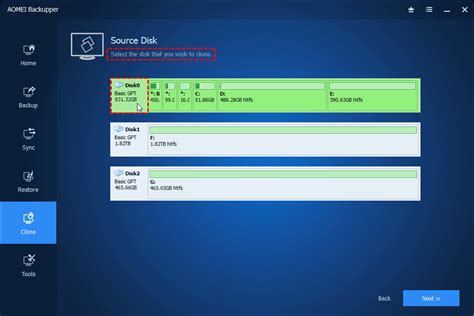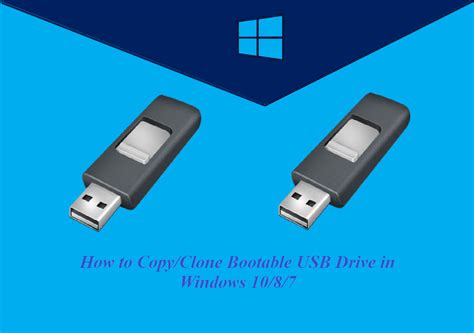boot linux from usb to clone hard drive What you will need: Backup your computer AND your USB drive. Create your partition table with at least one Linux-compatible file system. Boot from a live CD and rsync your system from the .
Which bags to bring? Weight, size, and baggage allowance. Prohibited and .
0 · usb bootable disk cloning software
1 · usb bootable disk clone utility
2 · duplicate a bootable usb drive
3 · copying bootable usb to another
4 · clonezilla won't boot from usb
5 · clonezilla on usb flash drive
6 · clone bootable usb windows 10
7 · bootable usb to copy disk
African Media Association Malta. @africanmediaassociationmal2398 ‧. 760 subscribers ‧ 183 videos. African Media Malta is the YouTube video Channel of an initiative built by journalists of.
Download Live Linux USB Creator (Lili) from http://www.linuxliveusb.com/en/download. Create a bootable Clonezilla (Live Clonezilla) on USB by running Live Linux USB Creator. Configure your Source desktop / laptop to boot from a .What you will need: Backup your computer AND your USB drive. Create your .
To clone directly from drive to drive, use this command: dd if=/dev/source .

You can easily clone USB flash drives on Linux. It is useful for backups and other purposes such as cloning USB for installation. You need to use the dd command. It will clone . The way I do it when I switch to a new HDD is: create the partition layout I want on the new drive. boot from Live CD/USB or install, rescue etc. .
What you will need: Backup your computer AND your USB drive. Create your partition table with at least one Linux-compatible file system. Boot from a live CD and rsync your system from the . 1) Installed Ubuntu Synaptic Package Manager - successful. 2) Installed Clonezilla via SPM - successful. 3) After installing Clonezilla on internal hard drive, it appears that .
usb bootable disk cloning software
In this video, I show you how to clone a drive that contains your operating system, to another drive, using Clonezilla--a free and open-source bootable Linux-based drive cloning .

To clone directly from drive to drive, use this command: dd if=/dev/source of=/dev/target bs=1M Alternatively, if you have enough space on your internal drive, you could create an image first, . Create a bootable Clonezilla (Live Clonezilla) on USB by running Live Linux USB Creator. Configure your Source desktop / laptop to boot from a USB drive. Insert both, the .
This tutorial will take you through the steps necessary to create a bootable Linux USB stick on Windows, macOS, and Linux machines. You can use this USB stick to boot and test out or install the Linux distribution on any .
Download Live Linux USB Creator (Lili) from http://www.linuxliveusb.com/en/download. Create a bootable Clonezilla (Live Clonezilla) on USB by running Live Linux USB Creator. Configure your Source desktop / laptop to .
usb bootable disk clone utility
To clone a drive or partition with Etcher, simply select Clone drive on the interface, then choose the source drive and the destination, and hit the Flash button. If you're cloning your system drive, you may want to consider adding Etcher to a portable live USB.
You can easily clone USB flash drives on Linux. It is useful for backups and other purposes such as cloning USB for installation. You need to use the dd command. It will clone a bootable USB (or USB hard disk) for backup. This page shows how to copy and clone USB stick on Linux operating systems. The way I do it when I switch to a new HDD is: create the partition layout I want on the new drive. boot from Live CD/USB or install, rescue etc. mount the old hard disk partition (s) to be copied to, say, /mnt/a. mount the new hard disk partition (s) to receive files to, say /mnt/b.
What you will need: Backup your computer AND your USB drive. Create your partition table with at least one Linux-compatible file system. Boot from a live CD and rsync your system from the USB drive. (Don't boot from the USB in question). Edit . 1) Installed Ubuntu Synaptic Package Manager - successful. 2) Installed Clonezilla via SPM - successful. 3) After installing Clonezilla on internal hard drive, it appears that Clonezilla must be downloaded and burned to a DVD. 4) Used Disks app to format USB external disk as Linux ext4 bootable.
In this video, I show you how to clone a drive that contains your operating system, to another drive, using Clonezilla--a free and open-source bootable Linux-based drive cloning utility.To clone directly from drive to drive, use this command: dd if=/dev/source of=/dev/target bs=1M Alternatively, if you have enough space on your internal drive, you could create an image first, making creation of multiple copies easier: dd if=/dev/source of=/home/me/image.img bs=1M Then, use the image to create clones:
Create a bootable Clonezilla (Live Clonezilla) on USB by running Live Linux USB Creator. Configure your Source desktop / laptop to boot from a USB drive. Insert both, the destination external hard drive or destination USB Flash drive in 1 USB Slot and the Clonezilla Live USB drive in other slot and boot. This tutorial will take you through the steps necessary to create a bootable Linux USB stick on Windows, macOS, and Linux machines. You can use this USB stick to boot and test out or install the Linux distribution on any computer that supports booting from USB. Download Live Linux USB Creator (Lili) from http://www.linuxliveusb.com/en/download. Create a bootable Clonezilla (Live Clonezilla) on USB by running Live Linux USB Creator. Configure your Source desktop / laptop to . To clone a drive or partition with Etcher, simply select Clone drive on the interface, then choose the source drive and the destination, and hit the Flash button. If you're cloning your system drive, you may want to consider adding Etcher to a portable live USB.
duplicate a bootable usb drive
You can easily clone USB flash drives on Linux. It is useful for backups and other purposes such as cloning USB for installation. You need to use the dd command. It will clone a bootable USB (or USB hard disk) for backup. This page shows how to copy and clone USB stick on Linux operating systems. The way I do it when I switch to a new HDD is: create the partition layout I want on the new drive. boot from Live CD/USB or install, rescue etc. mount the old hard disk partition (s) to be copied to, say, /mnt/a. mount the new hard disk partition (s) to receive files to, say /mnt/b.

What you will need: Backup your computer AND your USB drive. Create your partition table with at least one Linux-compatible file system. Boot from a live CD and rsync your system from the USB drive. (Don't boot from the USB in question). Edit . 1) Installed Ubuntu Synaptic Package Manager - successful. 2) Installed Clonezilla via SPM - successful. 3) After installing Clonezilla on internal hard drive, it appears that Clonezilla must be downloaded and burned to a DVD. 4) Used Disks app to format USB external disk as Linux ext4 bootable. In this video, I show you how to clone a drive that contains your operating system, to another drive, using Clonezilla--a free and open-source bootable Linux-based drive cloning utility.To clone directly from drive to drive, use this command: dd if=/dev/source of=/dev/target bs=1M Alternatively, if you have enough space on your internal drive, you could create an image first, making creation of multiple copies easier: dd if=/dev/source of=/home/me/image.img bs=1M Then, use the image to create clones:
Create a bootable Clonezilla (Live Clonezilla) on USB by running Live Linux USB Creator. Configure your Source desktop / laptop to boot from a USB drive. Insert both, the destination external hard drive or destination USB Flash drive in 1 USB Slot and the Clonezilla Live USB drive in other slot and boot.
gucci guilty travel spray
dolce gabbana parfum notino
Learn how to request copies of documents from the Air Force History Index, an index to the holdings of the Air Force Historical Research Agency. Find out the fees, .
boot linux from usb to clone hard drive|bootable usb to copy disk
























